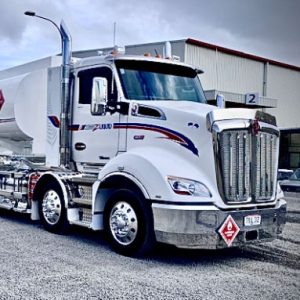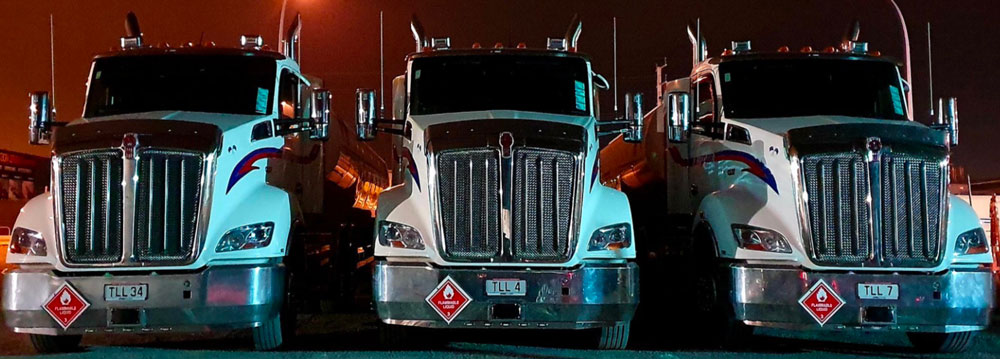View the pdf here.
 Tranzliquid is one of Aotearoa New Zealand’s largest providers of bulk fuel logistics and cartage services, with dozens of trucks moving thousands of tonnes across the country to and from the Port of Tauranga and the wider industrial area.
Tranzliquid is one of Aotearoa New Zealand’s largest providers of bulk fuel logistics and cartage services, with dozens of trucks moving thousands of tonnes across the country to and from the Port of Tauranga and the wider industrial area.
It is proud of its role in helping drive the region’s growth and the national import/ export economy. However, Tranzliquid has become increasingly frustrated and hamstrung by the growing and significant congestion caused by poor roading infrastructure. As a result, the company is advocating for urgent government commitment to fix a vital piece of Bay of Plenty infrastructure required to power New Zealand’s economy.
Current Situation
- The Port of Tauranga is New Zealand’s largest export port – a key entryway for fertiliser, fuel, and other goods that keep productive regions going:
- The port is home to 42% of New Zealand’s shipping containers, 32% of cargo, and 36% of exports.
- Container volumes have increased 67% in the last 10 years.
- Nationally, freight volumes are expected to grow 47-65% faster (40% conservatively by MOT Stats) than the NZ population in the next 10 years.
- The Road Freight Transport industry’s current (2023) value is estimated at $9.7bn.
“Our task at its core is simple, yet essential: to transport the items that power our economy, from the food on our tables to the machinery that drives our industries. And to do this, we need roads – reliable, efficient, and well-maintained highways. The efficiency of our highway system is directly tied to our national productivity and economic health.”
Greg Pert, Owner/Director Tranzliquid
Why State Highway 29?
Investment in SH29 is crucial for streamlining regional freight logistics and supporting the national economy. It will unlock greater freight efficiency and productivity, streamline supply chains, reduce congestion, and support the growth of local industries, including manufacturing, exports, and the Port of Tauranga, as well as everyone living in the region.
The upgrade also improves road safety for all users, including motorists, cyclists, and pedestrians. It includes modern safety features, wider lanes, improved intersections, and better lighting, ensuring a safer travel experience.
Alternative Modes
Rail and sea play an important role in moving freight long distances around Aotearoa and the world. However, these modes are only useful for connecting deliveries from A to B, whereas road transport fills the gaps everywhere else.
While rail and sea transport can move bulk commodity products between the Port of Tauranga, Hamilton and Auckland, neither mode can replace the door-to-door service provided by road transport. Goods, such as petroleum, have to be moved where people need them – and primarily, that’s not near a sea port or rail station.
“A nation’s economy depends on the efficient transport of goods. In our case, an investment in our roading infrastructure is an investment in our economic future. We must prioritise expanding and modernising SH29, creating a dedicated freight corridor that can meet the demands of our growing economy. This is not a nice-to-have, but a necessity that, if left unaddressed, will continue to sap our productivity and economic vitality.”
Greg Pert, Owner/Director Tranzliquid
What do we need?
SH29 requires an urgent upgrade; it’s no longer fit-for-purpose with degraded infrastructure posing safety risks for all road users (including motorists, cyclists and pedestrians), untenable congestion, and is stifling national and regional economic growth.
Funding could come from central government, other sources, or a combination of both. Offshore infrastructure rebuilds are often funded through successful investment and private partnerships. Examples include:
- Indiana Toll Road, USA
- Gauteng Freeway Improvement Project, South Africa
- WestConnex, New South Wales, Australia.
As well as providing much-needed (often complex) infrastructure investment, these types of partnerships also bring opportunities to upskill our workforce and provide ongoing employment opportunities, contributing to national growth.
Conclusion
By improving SH29, we will strengthen the resilience of our supply chains, ensure the free and efficient flow of goods, stimulate our economy, and secure the prosperity of Aotearoa New Zealand. In an era of unprecedented challenges, we cannot afford to let this issue slide.
For more info head to www.tranzliquid.co.nz



Comments are closed.